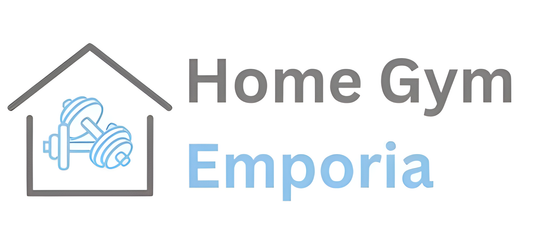June 26, 2024
A M A Emran Bashar
Staying fit can be a powerful tool in combating cardiovascular diseases
Cardiovascular diseases (CVDs) are the leading cause of death in the United States, posing a significant public health challenge. According to the Centers for Disease Control and Prevention (CDC), nearly 697,000 people in the U.S. died from heart disease in 2020, accounting for 1 in every 5 deaths . The high prevalence of cardiac health issues underscores the urgent need for effective prevention strategies, among which regular physical activity stands out. Understanding the molecular mechanisms through which physical activity reduces cardiac complexities can provide valuable insights into how exercise benefits heart health.
The Impact of Physical Activity on Cardiovascular Health
Physical activity exerts a wide range of beneficial effects on the cardiovascular system. Regular exercise helps to lower blood pressure, reduce LDL cholesterol levels, increase HDL cholesterol levels, and improve overall cardiovascular function. These benefits are mediated through several molecular mechanisms:
1. Endothelial Function and Nitric Oxide Production
One of the primary ways physical activity improves heart health is by enhancing endothelial function. The endothelium is a thin layer of cells lining the blood vessels, and it plays a critical role in vascular health. Exercise stimulates the production of nitric oxide (NO) by endothelial cells. Nitric oxide is a vasodilator, meaning it helps relax and widen blood vessels, improving blood flow and reducing blood pressure . Enhanced NO production reduces the risk of atherosclerosis (the buildup of plaques in the arteries), thereby lowering the risk of heart attacks and strokes.
2. Anti-Inflammatory Effects
Chronic inflammation is a key contributor to the development and progression of cardiovascular diseases. Regular physical activity has been shown to exert anti-inflammatory effects by reducing the levels of pro-inflammatory cytokines, such as tumor necrosis factor-alpha (TNF-α) and interleukin-6 (IL-6), and increasing the production of anti-inflammatory cytokines like interleukin-10 (IL-10) . This reduction in systemic inflammation helps protect against endothelial dysfunction and atherosclerosis.
3. Improved Lipid Metabolism
Exercise positively affects lipid metabolism by increasing the expression of enzymes involved in lipid oxidation, such as lipoprotein lipase (LPL). This enzyme plays a crucial role in breaking down triglycerides into free fatty acids, which can be utilized for energy. Enhanced lipid metabolism leads to a reduction in circulating levels of triglycerides and LDL cholesterol, both of which are major risk factors for cardiovascular diseases .
4. Enhanced Antioxidant Defense
Oxidative stress, characterized by an imbalance between the production of reactive oxygen species (ROS) and the body's antioxidant defenses, is implicated in the pathogenesis of cardiovascular diseases. Regular physical activity boosts the body's antioxidant defense system by upregulating the expression of antioxidant enzymes such as superoxide dismutase (SOD) and glutathione peroxidase (GPx) . This increased antioxidant capacity helps neutralize ROS, thereby protecting the cardiovascular system from oxidative damage.
5. Improved Autonomic Nervous System Regulation
The autonomic nervous system, which regulates heart rate and blood pressure, is positively influenced by regular physical activity. Exercise enhances vagal tone (the activity of the vagus nerve), leading to improved heart rate variability and reduced resting heart rate. This improved autonomic regulation contributes to better cardiovascular health and reduces the risk of sudden cardiac events .
Conclusion
Cardiovascular diseases remain a significant health burden in the United States, emphasizing the need for effective prevention strategies. Regular physical activity offers profound benefits for heart health through various molecular mechanisms, including improved endothelial function, anti-inflammatory effects, enhanced lipid metabolism, increased antioxidant defense, and better autonomic nervous system regulation. By incorporating regular exercise into daily routines, individuals can significantly reduce their risk of cardiac complexities and improve overall cardiovascular health.
References
1. Centers for Disease Control and Prevention. "Heart Disease Facts." [cdc.gov](https://www.cdc.gov)
2. Mayo Clinic. "Exercise and the heart: The benefits of exercise." [mayoclinic.org](https://www.mayoclinic.org)
3. National Institutes of Health. "The Role of Nitric Oxide in Cardiovascular Health." [nih.gov](https://www.nih.gov)
4. American Heart Association. "Inflammation and Heart Disease." [heart.org](https://www.heart.org)
5. Journal of Lipid Research. "Lipoprotein Lipase and Its Role in Lipid Metabolism." [jlr.org](https://www.jlr.org)
6. Oxidative Medicine and Cellular Longevity. "Antioxidant Defense Mechanisms and Cardiovascular Health." [hindawi.com](https://www.hindawi.com)
7. European Heart Journal. "Autonomic Nervous System and Cardiovascular Disease." [academic.oup.com](https://academic.oup.com)
